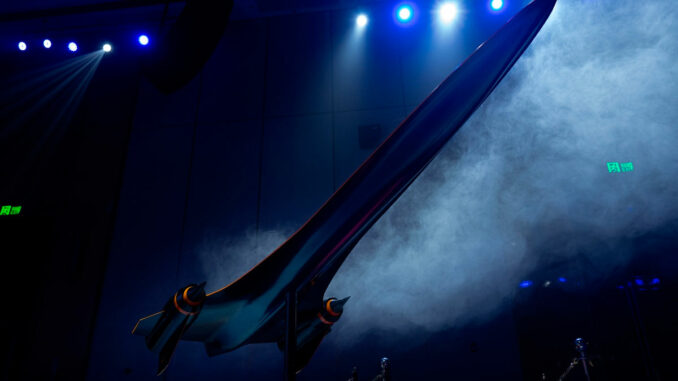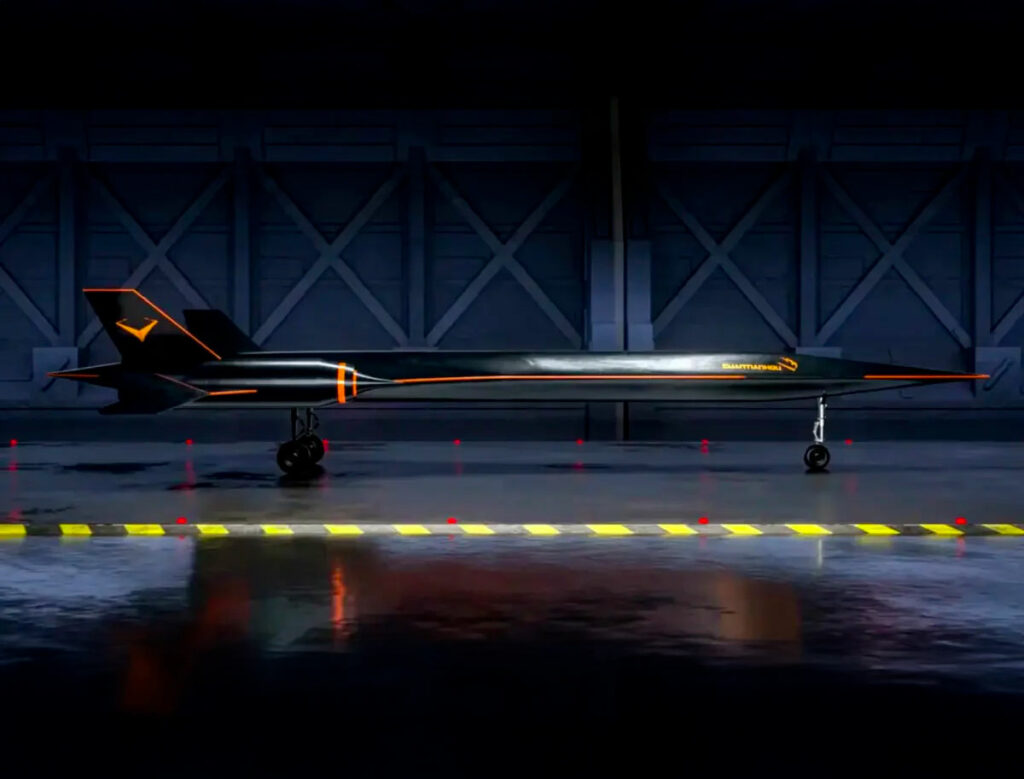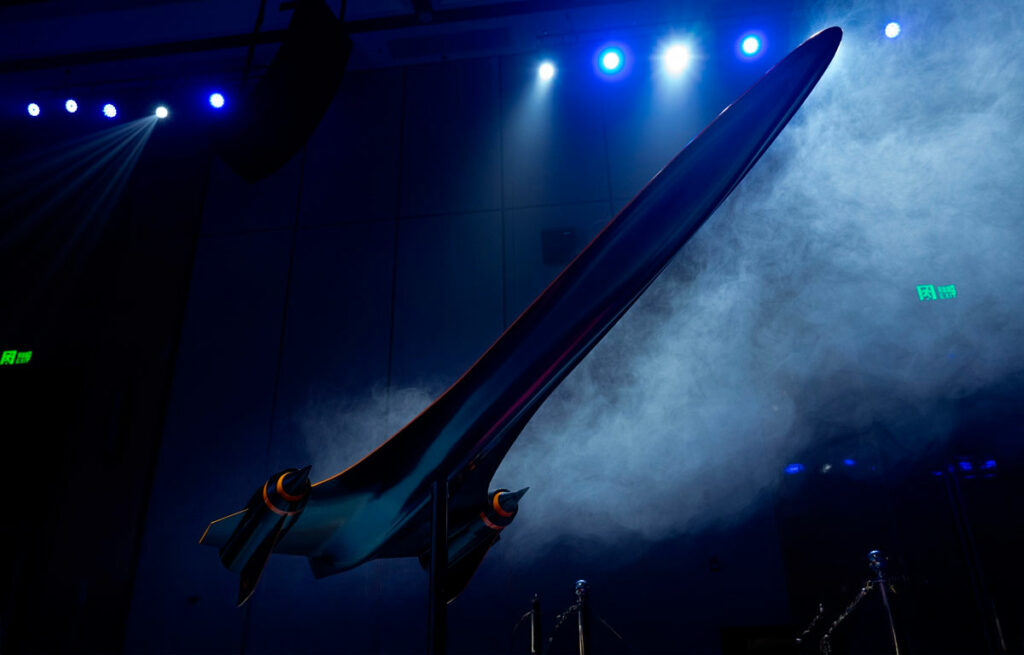
Lingkong Tianxing Technology presents a 7-meter UAV equipped with two detonation engines, prefiguring a supersonic airliner by 2030.
Chinese start-up Lingkong Tianxing Technology has unveiled its “Cuantianhou” supersonic UAV, capable of reaching Mach 4.2 at an altitude of 20 km. Measuring 7 meters and weighing 1.5 tons, it is powered by two detonation engines. An inaugural flight is scheduled for next year. This initiative is part of the company’s wider project to develop a supersonic airliner by 2030. In October 2024, the company tested a commercial prototype reaching almost twice the speed of Concorde. Rapid progress in aerodynamics, heat resistance and control systems has made it possible to bring forward the testing of the full-scale prototype of the “Yunxing” supersonic airliner to 2026, originally scheduled for 2027. Deng Fan, Chief Engineer of Lingkong Tianxing Technology, emphasizes the potential of supersonic airliners to offer more economical and reliable high-speed flight services in the years to come.
The development of the “Cuantianhou” supersonic drone
Lingkong Tianxing Technology, an innovative Chinese start-up, recently unveiled its supersonic drone dubbed “Cuantianhou”, or “Jumping Stone Monkey”. This unmanned aerial vehicle (UAV) measures 7 meters in length and weighs 1.5 metric tons. It is powered by two detonation motors, an advanced propulsion technology that enables supersonic speeds. The drone is designed to reach a speed of Mach 4.2, or around 5,000 km/h, at an altitude of 20 km. The first flight of this drone is scheduled for next year, marking a significant milestone in the development of supersonic flight technologies.

Detonation engines: a major technological advance
The detonation engines used in the “Cuantianhou” represent a significant advance in aeronautical propulsion. Unlike conventional combustion engines, detonation engines exploit shock waves to improve combustion efficiency, delivering greater thrust for less weight. The “Cuantianhou” is equipped with two Jindou-400S engines, each measuring 1.9 meters and weighing 100 kilograms, capable of generating thrust of at least 4,000 newtons. This technology enables the drone to reach speeds in excess of Mach 4, positioning it at the cutting edge of supersonic flight innovation.
Towards a supersonic airliner by 2030
The development of the “Cuantianhou” is part of Lingkong Tianxing Technology’s wider strategy to create a supersonic airliner. The company plans to test a full-scale prototype of its “Yunxing” supersonic airliner by 2026, a year earlier than originally planned, due to rapid progress in aerodynamics, heat resistance and control systems. The aim is to launch an operational supersonic airliner by 2030, offering more economical and reliable high-speed flight services. This initiative could revolutionize air transport by dramatically reducing long-distance flight times.

Technical and economic challenges of commercial supersonic flight
The development of supersonic airliners presents significant technical and economic challenges. Key obstacles include managing the heat generated by high-speed flight, reducing the noise caused by the supersonic bang, and improving fuel efficiency to make flight economically viable. Companies like Boom Supersonic are also working on similar projects, with plans for aircraft capable of flying at Mach 1.7 and carrying around 65 passengers. However, development costs and regulatory challenges remain major hurdles to overcome before commercial supersonic flight becomes a mainstream reality.
Implications for the global aerospace industry
If Lingkong Tianxing Technology succeeds in developing an operational supersonic airliner by 2030, it could have major implications for the global aviation industry. Supersonic flights could dramatically reduce journey times, making international travel faster and potentially changing the dynamics of global trade and tourism. However, environmental considerations, such as greenhouse gas emissions and noise pollution, will need to be carefully managed to ensure sustainable adoption of this technology. In addition, increased competition between companies seeking to dominate the supersonic flight market could stimulate innovation and lead to further technological advances in the aviation sector.
War Wings Daily is an independant magazine.